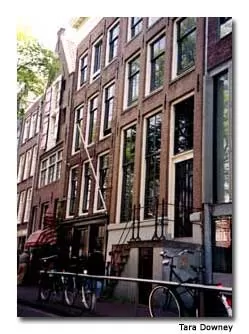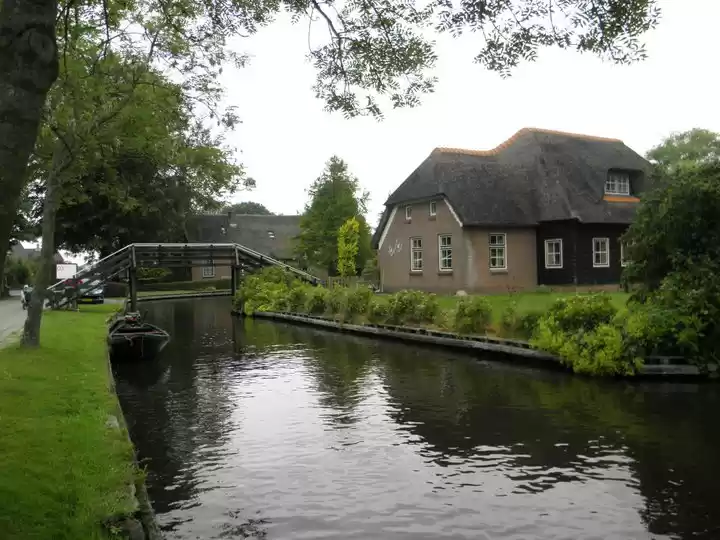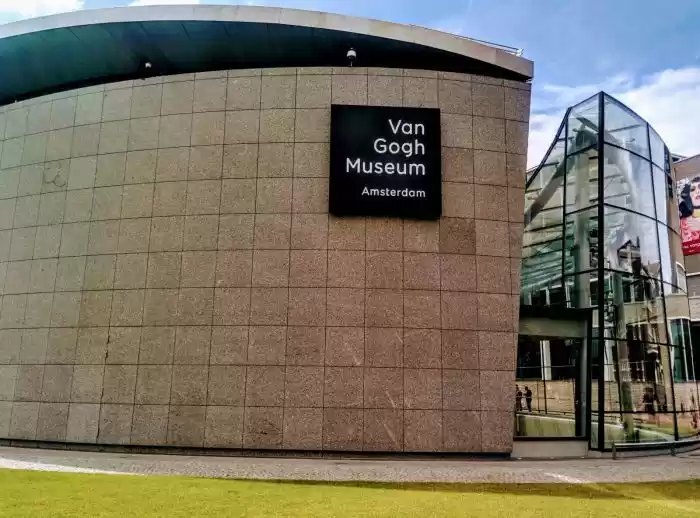





Many people come to Amsterdam with a bucket list—a compilation of tips gleaned from guidebooks, friends, family, curiosity and a little classroom history. Topping many lists is the Anne Frank House, one of the city’s most famous museums. Long deserted by its last residents, it’s where Amsterdam’s most famous teen writer vented daily frustrations in her world-renowned diary while hiding from the Nazis during World War II. Although the Secret Annex, where Anne Frank and her sister, parents and four other fearful Jews lived from 1942–1944, is both a testament to human courage and a reminder of wartime horrors, hordes of camera-toting tourists outnumber ghosts of times past these days. Arrive after 8:30—a bit early if you’ve enjoyed Amsterdam’s nightlife the eve before—and you’ll wait in line for hours. Fortunately, you can avoid wasting time by purchasing an e-ticket. For non-planners, there’s free WiFi for playing on your smartphone or tab while queuing up. If you lose patience, buy Anne’s diary and other accounts of the Holocaust at the English Bookshop in Amsterdam’s Jordaan district.

Although the Secret Annex, where Anne Frank and her sister, parents and four other fearful Jews lived from 1942–1944, is both a testament to human courage and a reminder of wartime horrors, hordes of camera-toting tourists outnumber ghosts of times past these days. Arrive after 8:30—a bit early if you’ve enjoyed Amsterdam’s nightlife the eve before—and you’ll wait in line for hours. Fortunately, you can avoid wasting time by purchasing an e-ticket. For non-planners, there’s free WiFi for playing on your smartphone or tab while queuing up. If you lose patience, buy Anne’s diary and other accounts of the Holocaust at the English Bookshop in Amsterdam’s Jordaan district.

Van Gogh Museum—repositories of Golden Age art, iconic sunflowers and tormented starry nights. While our destination museums are rife with artistic treasures, they’re also chock full of tourists, especially in high season (May–September), when millions descend on the Dutch capital. Avoid the queues with an e-ticket or Museumkaart, or make use of free WiFi while waiting in line. Once in, don’t count on marveling at the work of Dutch masters in solitary reverence at either of these popular tourist attractions, especially if you visit in summer or during school vacation time.

My recent visit to EYE Film Institute Netherlands revealed an homage to international cinema replete with interactive displays, perched like an ivory spaceship ready for launch on the northern bank of the river Ij. The striking facility, accessible via a free ferry from Central Station, houses four movie screening rooms, a museum shop and exhibit space currently showcasing “Fellini,” the master of post-war Italian cinema best known for La Strada, La Dolce Vita and 8½, through September 22. Topping the contemporary structure is the eye-popping EYE bar restaurant, where you can wash down a plate of bitter ballen with beer on tap while musing about cinematography against a backdrop of the watery Ij. On sunny days, a spacious terrace beckons for lunch or just contemplating the world of the moving image. The new location in Overhoeks, Amsterdam’s new urban district across the water from Central Station, replaces the Film Institute’s previous headquarters in Vondelpark.

You can step back in time at Museum van Loon, one of the best preserved of Amsterdam’s canal houses, offering a glimpse into the grandeur of 17th-century Holland. Built as a private residence in 1672, the museum was once the home of painter Ferdinand Bol (a pupil of Rembrandt). In 1884, wealthy merchant Hendrik Van Loon purchased it as a wedding gift for his son Willem, a founding member of the Dutch East India Company, whose grandson became mayor of Amsterdam. Today, its ornate detailing, historic paintings, exquisite furnishings, and precious silver and porcelain are reminders of the splendor of an earlier era. In the rear, a garden laid out in formal style borders a coach house where the Van Loon’s collection of historic carriages and harnesses is displayed.

Tired of highbrow culture? Sample a lighter approach to art devoted to a single theme at one of Amsterdam’s quirkiest museums: Katten Kabinet. While professionally curated, this homage to all things feline has a humorous edge. The collection features two floors of paintings, drawings, prints and sculptures by Picasso, Rembrandt, Toulouse-Lautrec and other renowned masters, all with cats on center stage. There is a gift shop on the first floor proffers cat-themed posters and souvenirs. Even if cats aren’t your thing, it may be worth the €6 entry fee just for the chance to enter a posh canal house on the Herengracht, where Dutch gentry dwelled in Holland’s Golden Age.
Even if cats aren’t your thing, Katten Kabinet may be worth a visit for the chance to enter a posh canal house.
Built in 1667 as a residence for the wealthy van Loon brothers, the structure was restored several times before affluent Dutchie Bob Meijer turned it into a museum in 1990 dedicated to the memory of his red tomcat John Pierpont Morgan. In 2004 it served as a set for the Hollywood blockbuster Oceans 12. A-list guests have included former Amsterdam mayor Jan Calkoen and American president John Adams. The present owner still resides on the upper floor of the building with his family and several felines who wander through the museum at will.





























